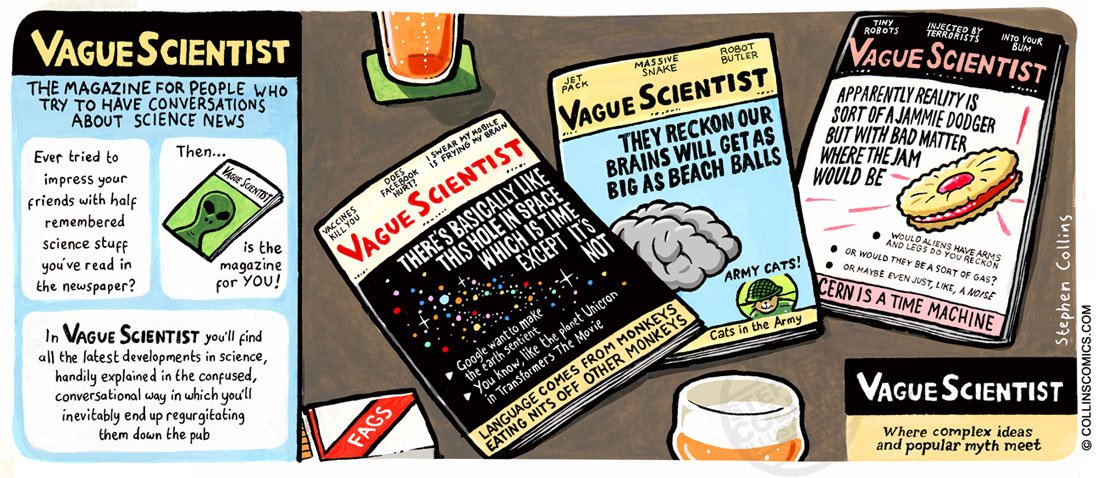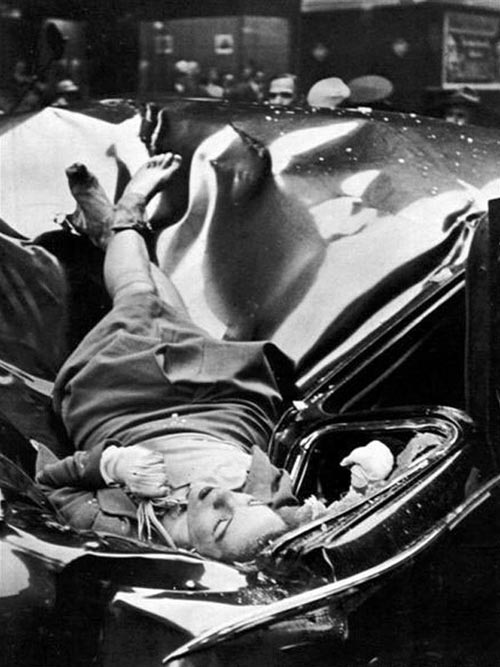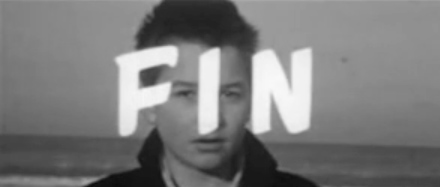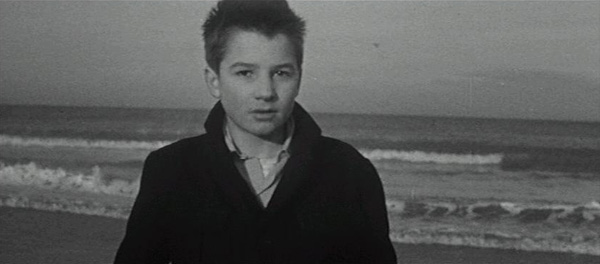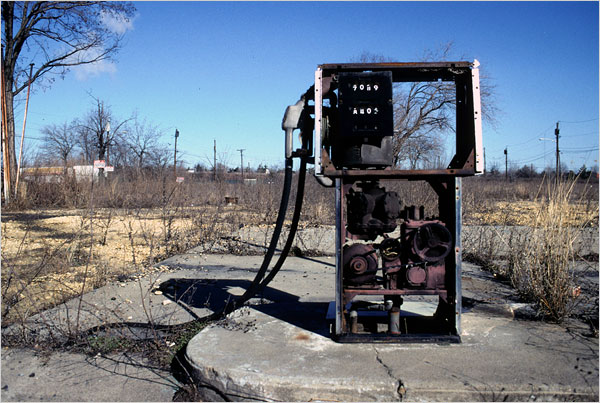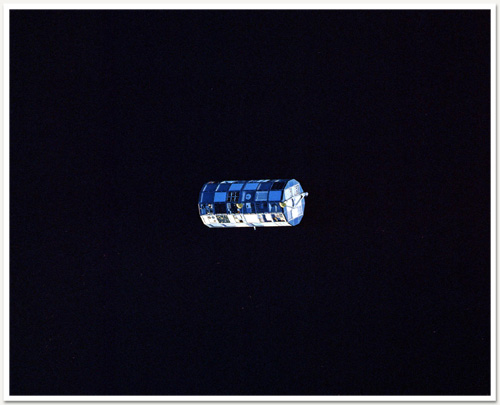Things tagged bestof:
Forecast 2010
James Howard Kunstler on his excellently titled blog Clusterfuck Nation:
One wild card is how angry the American people might get. Unlike the 1930s, we are no longer a nation who call each other “Mister” and “Ma’am,” where even the down-and-out wear neckties and speak a discernible variant of regular English, where hoboes say “thank you,” and where, in short, there is something like a common culture of shared values. We’re a nation of thugs and louts with flames tattooed on our necks, who call each other “motherfucker” and are skilled only in playing video games based on mass murder. The masses of Roosevelt’s time were coming off decades of programmed, regimented work, where people showed up in well-run factories and schools and pretty much behaved themselves. In my view, that’s one of the reasons that the US didn’t explode in political violence during the Great Depression of the 1930s - the discipline and fortitude of the citizenry. The sheer weight of demoralization now is so titanic that it is very hard to imagine the people of the USA pulling together for anything beyond the most superficial ceremonies - placing teddy bears on a crash site. And forget about discipline and fortitude in a nation of ADD victims and self-esteem seekers.
Mirror, Mirror on the Wall
Errol Morris:
During the last week of the Bush administration, I asked the head photo editors of these news services — Vincent Amalvy (AFP), Santiago Lyon (AP) and Jim Bourg (Reuters) — to pick the photographs of the president that they believe captured the character of the man and of his administration.
Via Daring Fireball.
Run Lola Run Lola Run Lola Run Lola Run
Run Lola Run Lola Run Lola Run Lola Run from shiffman on Vimeo.
Via kottke.org.
Deformation
Robert C. Wiles, 1947
On May Day, just after leaving her fiancé, 23-year-old Evelyn McHale wrote a note. 'He is much better off without me ... I wouldn't make a good wife for anybody,' ... Then she crossed it out. She went to the observation platform of the Empire State Building. Through the mist she gazed at the street, 86 floors below. Then she jumped. In her desperate determination she leaped clear of the setbacks and hit a United Nations limousine parked at the curb. Across the street photography student Robert Wiles heard an explosive crash. Just four minutes after Evelyn McHale's death Wiles got this picture of death's violence and its composure.
Via Super Colossal.
See also Crashing to Earth, Again and Again
The End
Fabulous collection of “The End” movie title cards.
Missing my favorite though:
Which is admittedly better pre zoom and title:
Via Daring Fireball.
Shirky on Coase, Collaboration and Here Comes Everybody
Clay Shirky, author of Here Comes Everybody: The Power of Organizing Without Organizations, talks about the economics of organizations with EconTalk host Russ Roberts. The conversation centers on Shirky’s book. Topics include Coase on the theory of the firm, the power of sharing information on the internet, the economics of altruism, and the creation of Wikipedia.
And a great bit of discussion on representative vs. direct democracy and the possibility that networks can enable direct democracy.
Via EconLog.
DutchTek 2008
Boy those DJ's sure look happy don't they?
Here you can see a good example of the dutch "tekno" dance.
Check the girl rocking out at 4:10.
Out of Gas
A collection of photos of old gas stations from Camilo José Vergara’s amazing Invincible Cities project, which if you haven’t seen, you need to check out.
Beautiful Machinery
Sculptor and engineer Arthur Ganson talks about his work -- kinetic art that explores deep philosophical ideas and is gee-whiz fun to look at.
Via Wohba!.
The World in His Mail Box: Eulogy for Tony Schwartz
Posted by Doug Schulkind to WFMU's Beware of the Blog.
Recorded sound had no greater friend than Tony Schwartz, the audio documentarian, advertising guru, media consultant, and exalted citizen of the aural universe, who passed away Saturday a few months shy of his 85th birthday. He'll be forever linked to his best-known work—the infamous "Daisy" ad from Lyndon Johnson's 1964 re-election campaign—but to many, Schwartz is beloved for sharing with the world his lifelong infatuation with the musicality of prosaic sounds.
And Doug posted some great clips from his albums, go listen.
Could an Acid Trip Cure Your OCD?
Linda Marsa in Discover Magazine:
At a handful of sites across the country, after a four-decade hiatus, psychedelic research is undergoing a quiet renaissance, thanks to scientists like Charles Grob who are revisiting the powerful mind-altering drugs of the 1960s in hopes of making them part of our therapeutic arsenal. Hallucinogens such as psilocybin, MDMA (better known as Ecstasy), and the most controversial of them all, LSD, are being tested as treatments for maladies that modern medicine has done little to assuage, such as post-traumatic stress disorder, drug dependency, obsessive-compulsive disorder, cluster headaches, and the emotional suffering of people with a terminal illness.
While Grob’s study is not complete—he has tested 11 out of a projected 12 volunteers—patients seemed to have positive experiences. “No one had a bad trip, and most derived some benefit,” he says. “It lowered their anxiety, improved their mood and disposition, and imbued them with a greater acceptance of their situation and capacity to live in the moment and appreciate each day.”
This is a fairly well written article that covers the basics of past psychedelics research, and the current minimal studies that are going on now. I have archived the article here because Discover's site is completely broken in Safari, and hideously unusable in Firefox.
Werner Herzog in Conversation With Errol Morris
In The Believer is a conversation that took place at Brandeis University in the fall of 2007, moderated by Alice Arshalooys Kelikian. And this is the best conversation I have ever read:
ERROL MORRIS: Yeah. The intention is to put the audience in some kind of odd reality. [To moderator] Werner certainly shares this. It’s the perverse element in filmmaking. Werner in his “Minnesota Manifesto” starts talking about ecstatic truth. I have no idea what he’s talking about.
But what I do understand in his films is a kind of ecstatic absurdity, things that make you question the nature of reality, of the universe in which we live. We think we understand the world around us. We look at a Herzog film, and we think twice. And I always, always have revered that element. Ecstatic absurdity: it’s the confrontation with meaninglessness.
I was talking with Ron Rosenbaum, a friend of mine, who had just finished a book on Shakespeare. We were talking about the meaning of meaninglessness. Is there such a thing? And I would say: yes. Werner’s work could be considered an extended essay on the meaning of meaninglessness.
WERNER HERZOG: Thank you, yes. It feels good to hear that. [Laughter]
Later:
WH: [. . .] And I said that we were going to do a film there in Plainfield, and that really upset Errol a lot. He thought I was a thief without loot. This was his country, his territory, his Plainfield, and I shot in Plainfield. I shot a film, Stroszek, which I think is forgotten and forgiven by now, and we can maintain friendship over this now.EM: I told Werner: For you to steal a character or a story isn’t real theft. But to steal a landscape, that is a very, very serious crime.
WH: I understand that. I take it to heart, but there actually is a film out there, and we can’t take it off the map.
EM: It’s a very good film.
WH: It has a beautiful end with a dancing chicken, and I really like it.
EM: Yes.
Via cityofsound.
Christiaan Postma
The starting point with this project was a personal study about form & time. I put together more than 150 individual clockworks and made them work together to become one clock. I show the progress of time by letting the numbers be written in words by the clockworks. Reading clockwise, the time being is visible through a word and readable by the completeness of the word, 12 words from “one” to “twelve”.
Here is an animation of it in action.
Via MAKE: Blog.
Government, Bound or Unbound?
Anthony de Jasay at Cato Unbound:
This paper is a sequel of an article I wrote twenty years ago that I now think can be put more tightly and clearly. That early paper was born of the irritation I felt, and continue to feel, at much of the classical liberal discourse about limited government. At least since Locke, that discourse sets out a normative ideal of government: the protector of “rights” its citizens are in some fashion endowed with, and the guarantor of liberty that ranks above rival values. Such government uses coercion only to enforce the rules of just conduct. This ideal is attractive enough to the liberal mind. The reason why it nevertheless irritates is that it makes it seem that the writing of a constitution of liberty is a plausible means for transforming the normative ideal into positive reality. The message is that “we” can have limited government in the above sense if only “we” understand why we ought to wish it. The “we” is crucial, for it suppresses the essence of collective choice. Collective choice starts where unanimity ends, and involves some deciding for all, where the “some” control the apparatus of government. It is the potential for some to benefit morally and materially at the expense of others that creates the bone of contention and that limits on government are meant to move out of reach. It is odd that little or no awareness is shown of the “incentive-incompatibility” (if we may use ugly but handy jargon) of limits that would exert real rather than illusory restraint.
Fairly simple and easy to read look at the impossibility of legislatively constraining government, and on the other hand the natural economic limits that do constrain all governments (though in a painfully wide band that they can and do tend to oscillate in).
Via EconLog.
Long Duration Love Affair
JMorrison at the nonist:
That cylindrical object you see pictured above is a roughly school-bus sized structure which was deployed into space in 1984. It orbited the Earth for five and a half years with nothing expected of it other than to float there, getting battered about by whatever the great black yonder saw fit to throw at it. You see, every inch of its outside surface was covered with Science. 57 separate experiments, mounted in 86 trays, involving the participation of “more than 200 principal investigators from 33 private companies, 21 universities, seven NASA centers, nine Department of Defense laboratories and eight foreign countries.” Its purpose was to study the effects of space on a multitude of materials. Its name is the Long Duration Exposure Facility (LDEF) and I am deeply in love with it.
Via cityofsound.
